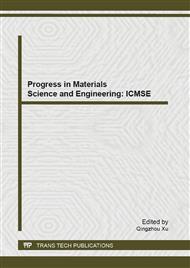p.165
p.171
p.179
p.183
p.187
p.195
p.201
p.205
p.212
A Recovery Algorithm of Star Energy Distribution for Star Sensor under High Dynamic Condition
Abstract:
Under the condition of high dynamic, there is a pixel shift phenomenon which is called smear in the star image sampled by star sensor. The recovery algorithm of star energy distributing for star sensor is presented in the paper. The quaternion of next frame is calculated with the previous continuous quaternion. All the ideal star coordinates of star image in the FOV is calculated with the quaternion of next frame. Then the angle between the two previous continuous axis directions is calculated with the previous continuous axis directions calculated with the previous continuous quaternion. The radius of threshold scan window of star image is calculated according to the angle. Finally, within the star image radius of the threshold scan window, shift the original star image to make the shifted star energy distribution continuous. So the star image distribution subjects to 2-D Gaussian distribution, and the star coordinates is obtain with centroiding algorithm. A star sensor featuring a recovery algorithm of star energy distributing for star sensors proposed in this paper was for demonstration at night sky experiment.
Info:
Periodical:
Pages:
187-192
Citation:
Online since:
October 2013
Authors:
Keywords:
Price:
Сopyright:
© 2013 Trans Tech Publications Ltd. All Rights Reserved
Share:
Citation:


